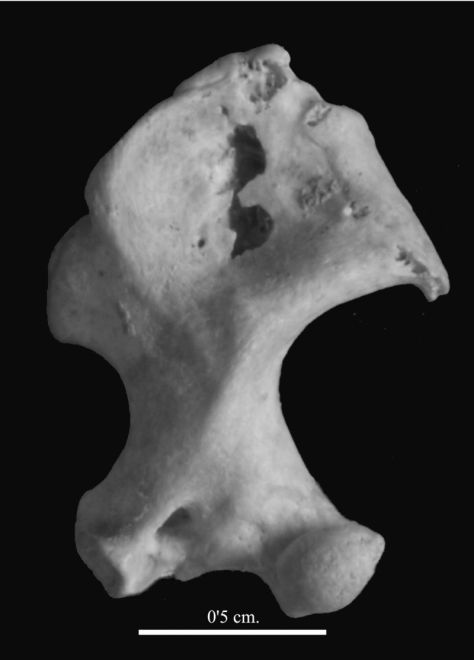NewsNext Previous
A giant shrew which lived in Atapuerca about 1.2 million years ago consumed mammals larger than it to complement its diet
As it’s evidenced by the marks in a mole humerus, some depressions caused by bites, that haven’t been recorded before in small mammals
The diet of such small animals like the red-toothed shrews (Beremendia fissidens) is a controversial task among the specialized palaeontologists. Traditionally, they have been regarded as major consumers of insects, but given its weight (50 gr.), some specialists have thought, they would also need to capture some small mammals to maintain their high metabolic rate, as it does its closest relative, the northern short tail shrew.

Throughout this discussion, the study of a mole humerus (Talpa cf. europaea) that presents six depressions, found at the level TE9 of the Sima del Elefante (Sierra de Atapuerca, Burgos, Spain), with an age of about 1.2 million, has demonstrated that it was consumed by a red-toothed shrew Beremendia fissidens. “We should note that these alterations are not common in small mammals. So far, in any other micromammal fossil have been found such marks, with a so clear and defined morphology that can be attributed to a bite and allows its study”, said Maria Bennàsar, collaborator of the IPHES (Institut Català de Paleoecologia Humana i Evolució Social) and lead author of the paper published in the Historical Biology. The work has also involved other members of the research center as Isabel Cáceres, Rosa Huguet and Hugo A. Blain, and other members of the Atapuerca Research Team, as Gloria Cuenca and Juan Rofes.
Maria Bennàsar has emphasized that the conducted research “evidenced that the red teeth shrew is the author of the bites on the mole humerus. This suggests its ability to capture larger preys than itself, although it had no specialized morphological features in the consumption of small mammals”.
Reference
Bennàsar, M., et al., “Exceptional biting capacities of the Early Pleistocene fossil shrew Beremendia fissidens (Soricidae, Eulipotyphla, Mammalia): new taphonomic evidence”, Historical Biology (2014).


